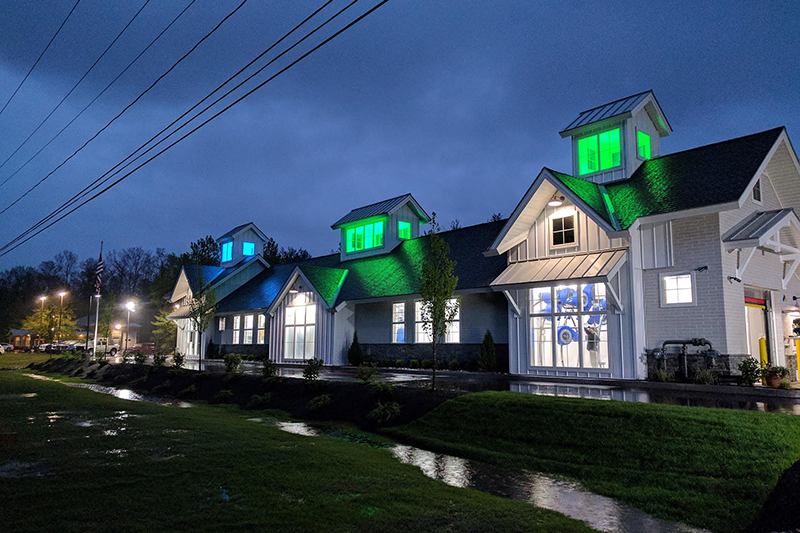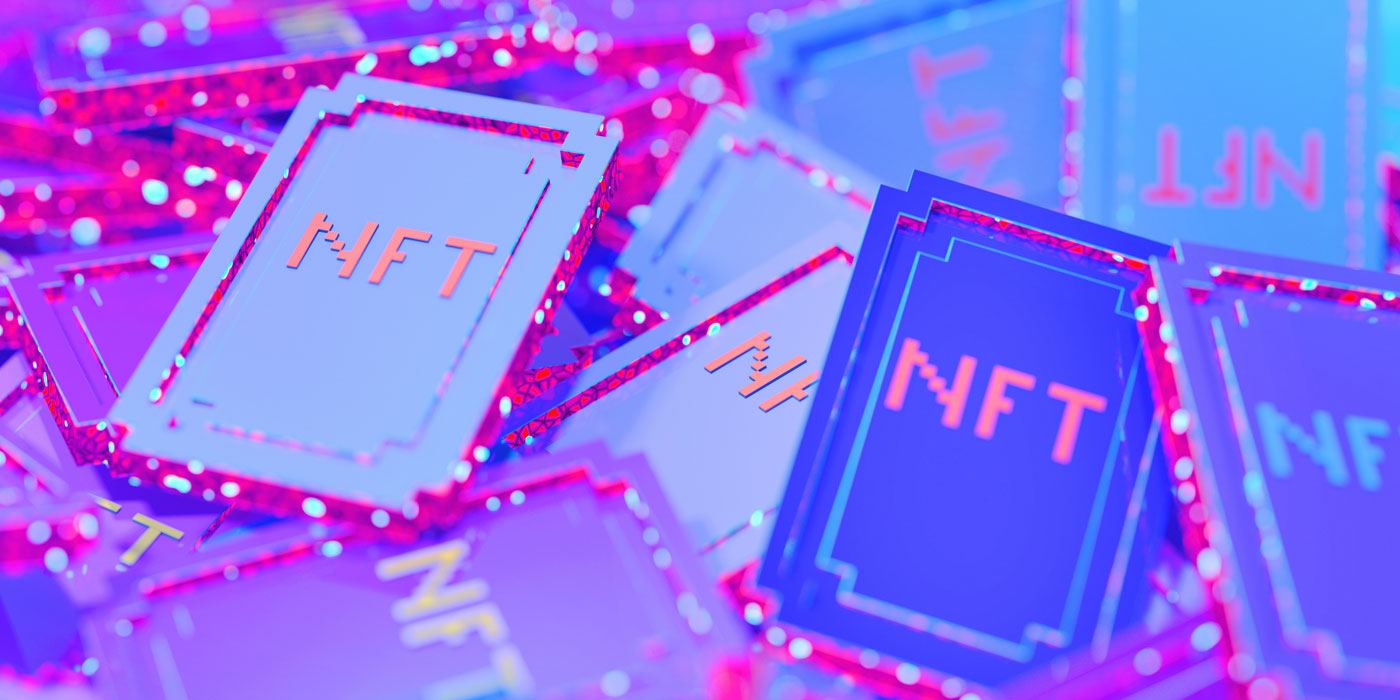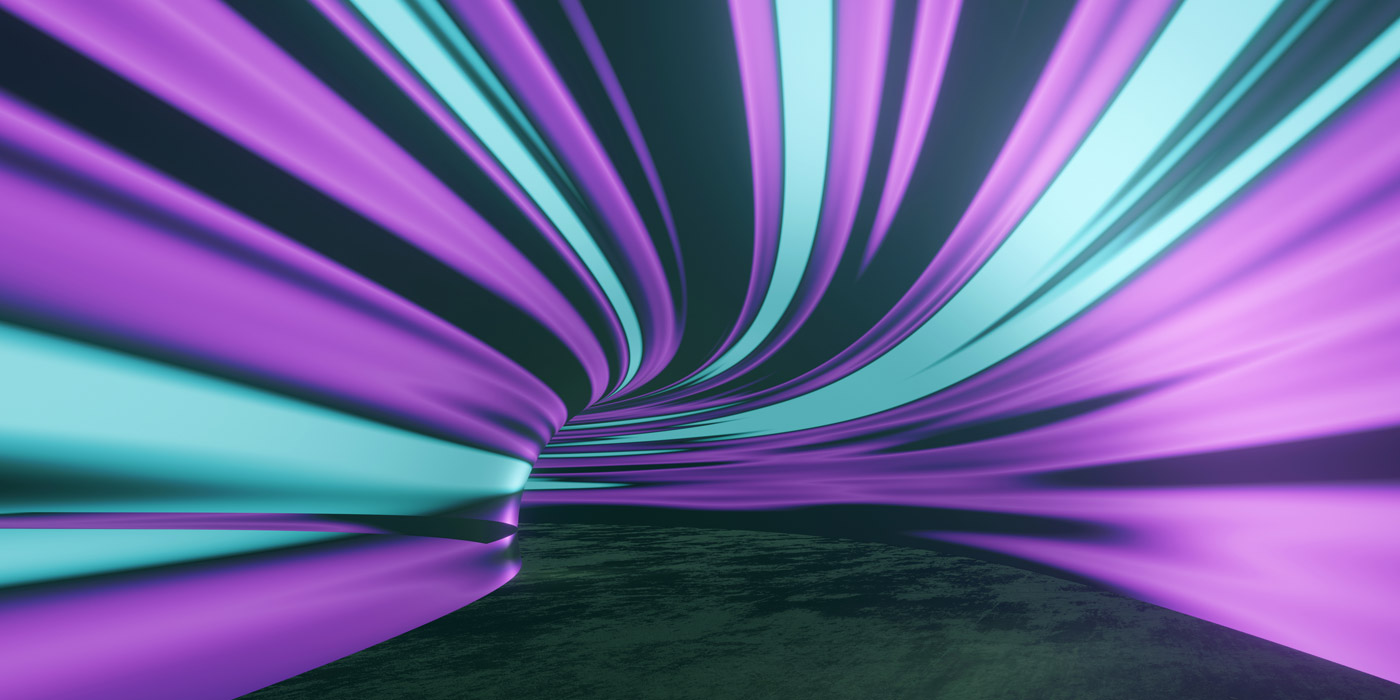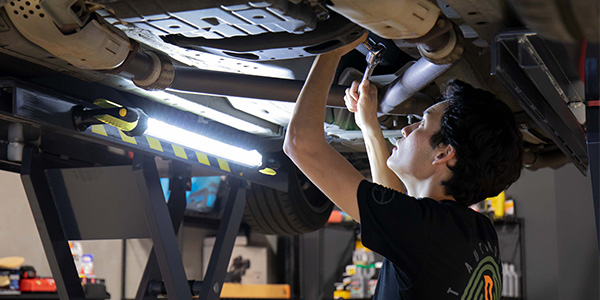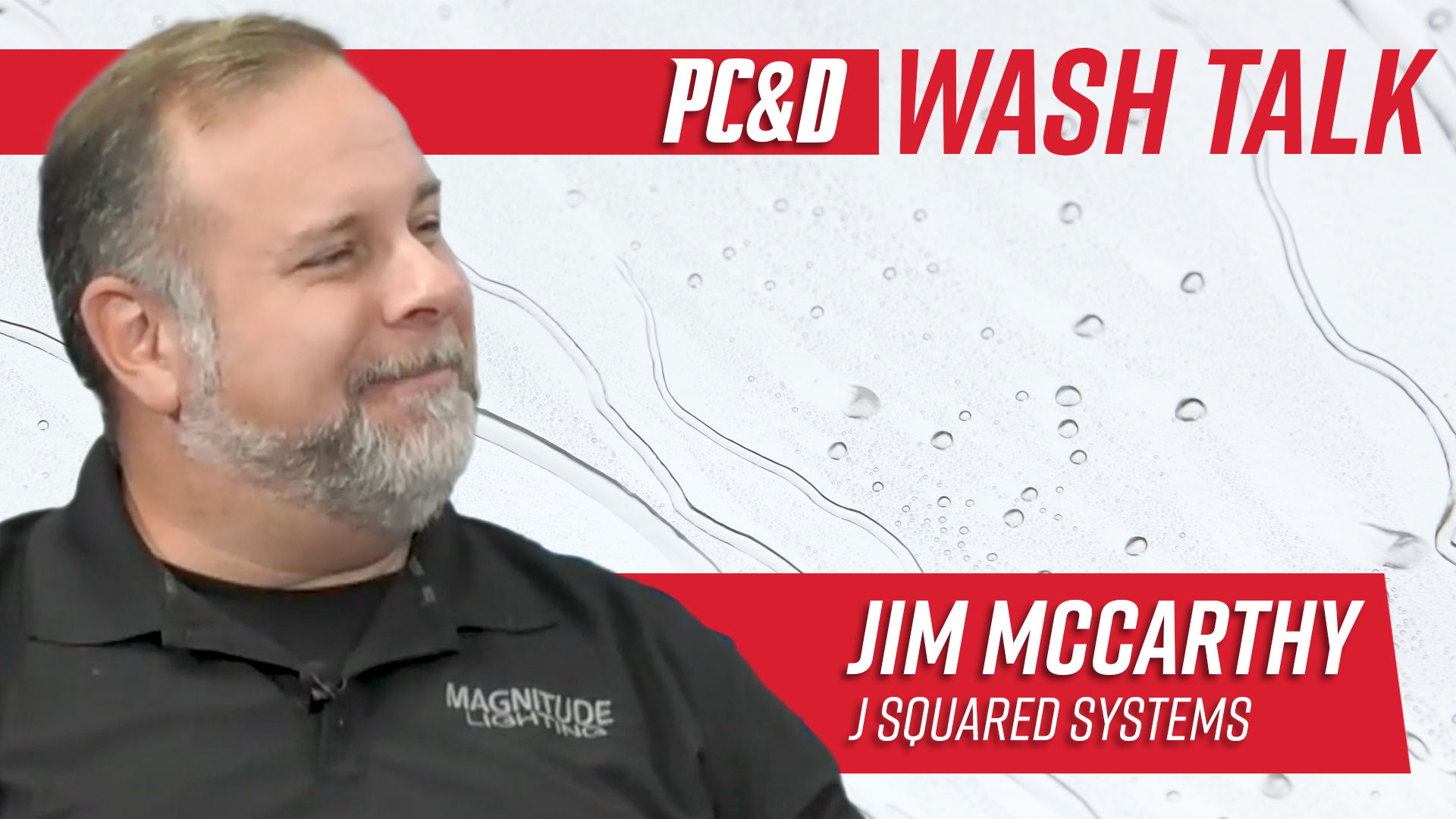A phrase that carwash businesses seldom hear is, “Welcome to the neighborhood.” For many forward-facing, service-based industries, a high-traffic location can equal success. Often, being close to high numbers of potential customers means building in competitive and crowded commercial areas. How can a car care business in a bustling area attract customers when its location is surrounded by hundreds of signs and dozens of retail properties?
One of the most eye-catching, affordable and effective marketing tools available to carwash locations today is modern LED lighting. Used properly, the fixtures’ color, movement and illumination properties can work together to differentiate a site from the traditional storefront and signage utilized by nearby businesses. Working with lighting professionals, carwashes can use new light fixtures to stand out in crowded locations, market profitable services and even make wash sites safer and more inviting.
Attracting traffic
LED fixtures can be used to communicate multiple messages to potential customers, according to Cory Baright with G&G LED Lighting. LEDs are a great option to make a carwash site stand out in crowded areas, communicate to customers that a site is open for business and remind customers that their vehicles need a wash. Further, LED lighting produces a crisp, clean light that creates a welcoming and safe environment for all wash customers.
Baright notes that many businesses now install color-changing LEDs to a site’s high-visibility locations, such as street-facing windows, to help draw in customers. Operators can set a color-changing show or choose a specific color for a specific time of the year. “For example, on Halloween, operators can light up the wash with an orange glow,” Baright explains.
Related: Give the gift of carwashing
According to Michael Call of Mile High LED Systems, one of the most common questions he hears from customers is, “How bright should my carwash be?” His answer: “Be brighter than your neighbors.”
A wash often needs to be brighter than nearby locations and neighboring businesses to attract customers’ eyes and create a feeling of cleanliness and safety. “A wash that is dimmer than its neighbors will look dirty, unsafe and run-down,” Call reveals. “So, if your wash is next to a car dealership and gas stations, you’ll need to be very bright. Carwashes in residential areas can be less bright.”
Creative colors
Due to LED fixtures, the use of color lighting in many carwashes has increased. Baright notes that illuminating in-tunnel application arches and signage with color LED lighting has become extremely popular in the carwash market. Operators have learned that colorful lighting is a high-visibility way to enhance the product being applied to the vehicles, such as soaps, waxes, rinses, etc.
“For example, adding an amber color LED can light up the car as it travels under your wax arch application and give the appearance of hot lava on the vehicle,” Baright says. “Blue lighting can be used for a waterfall feeling in rinse applications, and red lighting in the dryer bays for a warming sensation. Again, it is a super effective way to enhance the customer experience and create a ‘wow factor.’”
LED lights have become popular options to help upsell services and attract new customers by acting as a form of signage, Call states. Color LEDs can wrap buildings like neon does but with improved reliability and lower cost. Highlight walls are another option, and LED lighting can be used in entry and exit canopy areas visible from the street to help attract customers to the business.
More and more carwashes are realizing that LED arch signs can be bright and rich in marketing information, and colorful LED lighting can be used to attract additional attention to a sign. However, Call warns operators to be wary of the effect color lights can have on already colorful signs. For example, a bright red light placed on an arch sign may result in the loss of the sign’s details and impact. When highlighting signs, it may be best to flash the light on the sign for a second or two, drawing attention to the sign, and then use a white light to spotlight whatever the sign’s message is.
Selling more services
Pushing the sales of specific services is another task that LED lighting is set to assist. Operators looking to enhance the washing experience can turn to colorful LED lighting integrated into carwash services, Call states. Washes can use LED lighting only on certain services purchased — e.g. premium service packages — creating a different wash experience versus the standard wash package. This step can reinforce the value of additional services offered.
Chemical arches are the most popular area of use for LED lighting color augmentation, Call notes. Presoak, wax and triple foam products appear to glow with LED lights shining on them. This application can make the products appear to be a better value to customers.
“While LED lighting does not improve how well the wash cleans, it does impact the customer’s mindset on the perceived value of the wash. It draws customers’ attention to services they purchase, reinforcing the service bought,” Call says.
Baright agrees, noting that today, LED lighting can be found at just about every carwash in the country, and for good reason: The lights are a great and simple way to highlight services that a wash provides. Versatile LED lighting can be used to highlight vacuum and detail areas. But first and foremost, installing high-quality LED lighting enhances the overall aesthetics of a facility and provides a modern, clean and safe appearance that is welcoming to all customers.
Many operators now add controls to LED lighting, especially color lighting, to help drive business and increase sales for add-on services. A great example is tunnel services where an owner can add color to enhance application arches or turn a specific area of the wash a certain color based on the wash package purchased. Baright explains that several new LED products can communicate directly with a tunnel controller to change colors and create vibrant shows based on the wash package’s level. This is an incredibly effective way to enhance the overall customer experience and help drive new and repeat business.
Dependability and popularity
Baright notes that LED technology has come a long way in the past few years, and now there are many quality products available to the car care industry. Operators should always ask for product warranty information and look for UL certifications and lifetime data. In today’s market, products with over 150 lumens per watt, 100,000-plus hour lifetime ratings and five-plus-year warranties are common. That said, there are still systems from overseas that may lack the certifications and rating requirements for demanding carwash applications.
The largest change in LED technology is not in price or dependability but in efficacy. Call says, “Five years ago, 100 lumens per watt was cutting edge. Now, we are seeing lights 50 percent to 75 percent more efficient — 150 lumens to 175 lumens per watt — saving even more in power usage.” Lighting manufacturers can even upgrade their LED chip sets annually to ensure the best efficacy possible.
Related: Carwash utility bill and environmental savers
As for the LED’s popularity, Baright once again references the fixtures’ versatility. Tunnel entrances and exits, application arches, automatic and self-serve bays, vacuum canopies/arches and signage — LED lighting has allowed operators to install lighting in these areas where they previously could not with older technology. Also, the color capabilities and controllability of LED lighting has opened a door to endless possibilities for operators.
“Not to mention, LEDs are extremely efficient and require less routine maintenance than traditional lighting for a fast return on investment,” Baright continues.
Call shares four reasons why LED lighting is now so popular with professional carwash locations:
- Lower operating costs (80 percent, plus with less power usage versus metal halides)
- Lower annual maintenance
- Better quality lighting
- Strategic differentiation on-site through the use of color LEDs.
LED best practices
Two LED best practices include remembering light distribution and planning. First, even light distribution is critical in bays and tunnels, Call states. If an area of the tunnel is very bright, all other areas will look dim by comparison. The best lighting plans for bays and tunnels will take into consideration even lighting distribution with minimal or no hot spots and dark areas.
Call suggests an operator and distributor work together to develop a photometric plan, or a lighting plan built using computer software. This plan will enable the owner to numerically see the light coverage across a tunnel and ensure that the lighting placement, quantity and light fixture type are appropriate and optimal for the area. Some companies offer complimentary photometric planning for their customers.
Baright recommends, just like with any other important purchase, that an operator do his or her homework before choosing a system. Make sure the fixtures selected have a sufficient IP (waterproof) rating and are UL Wet Listed for use in carwash environments. Distributors can suggest ideal fixtures for tunnels, in-bay automatics and self-serve wash bays. Operators should not hesitate to consult with the manufacturer, and a company should be happy to provide complimentary lighting layouts and recommendations.
A carwash should always be able to tailor solutions custom to a specific facility. “If you dream it, you can probably do it with LED technology,” Baright concludes.
Eugene Allen is a freelance contributor.

